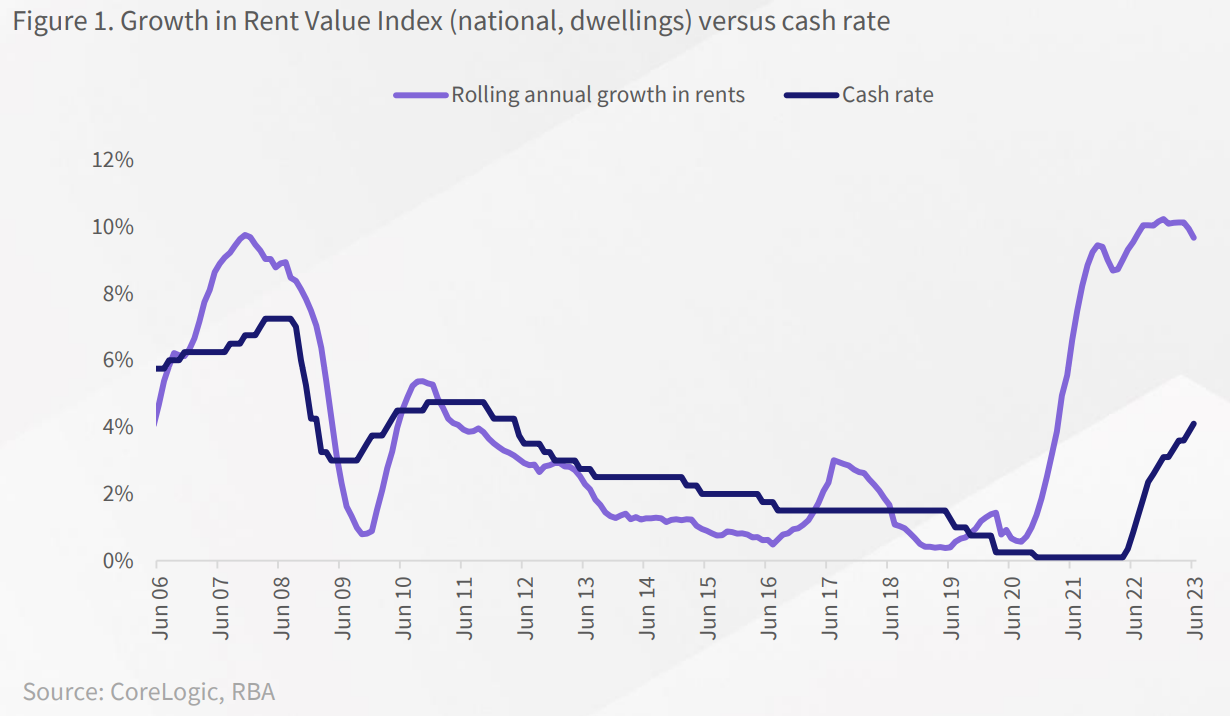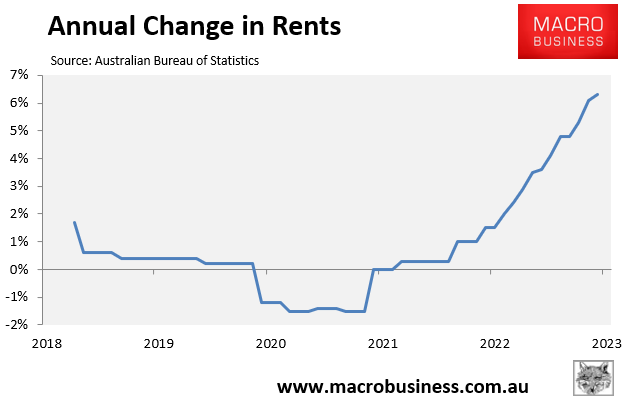CoreLogic’s head of research, Eliza Owen, has published an interesting report examining the links between residential rental growth and interest rates.
Owen produced the below chart showing that rents and the official cash rate “move together over time”.
Therefore, “a peak in the cash rate may indicate that growth in rent values is also at (or near) a peak”:

Owen gives multiple reasons why rents and interest rates may move together:
“For one, rents are an input in measuring inflation. When rents rise, inflation can rise, and this prompts the RBA to lift interest rates”.
“Secondly, interest rates can impact rent. Higher interest rates mean investment property becomes less attractive, which could slow the delivery of new rental stock coming to market, and this could push rents higher”.
“Investors may have increased rents to help fund higher mortgage costs”. Although “rents can generally only rise substantially if the rental market is competitive, and tenants cannot find alternative accommodation to bargain with; in other words, rents rise when demand for rental accommodation is outweighing supply”.
Owen believes that rental growth will slow in 2024 owing to an increase in people moving into share housing due to affordability constraints and the belief that the large pipeline of homes currently under construction will hit the market.
While I agree that rental growth has likely passed its peak, as illustrated above, it should remain at strong levels due to the historically high immigration-driven population growth.
Moreover, there is a long lag between asking rents on newly signed leases (depicted above) and overall rents (existing and new) measured by the ABS as part of its CPI calculation:

In his May testimony to the Senate Estimates Economics Committee, RBA Governor Phil Lowe warned that residential rental growth would likely hit a three decade high of 10%, which will continue to stoke inflation.
Lowe also warned that rent inflation would remain high for an extended period because Australia’s population is rapidly increasing and rental demand is easily outrunning supply.
“It’s really hurting some people. The underlying issue here is supply and demand in the rental market. The vacancy rates in many cities are very low”, Lowe said.
Rents are the single biggest component of the CPI, accounting for around 6% of the index.
Therefore, rising rental growth means higher inflation, other things equal, suggesting the RBA will keep interest rates higher than it otherwise would.

